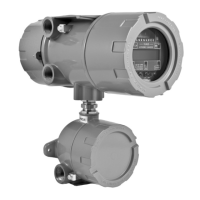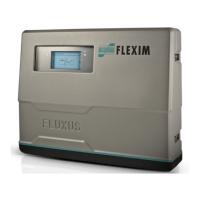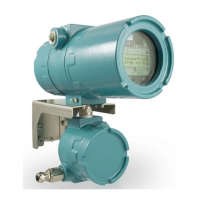Do you have a question about the Flexim FLUXUS ADM 5 07 Series and is the answer not in the manual?
| Media | Liquids |
|---|---|
| Measuring Principle | Transit-time difference |
| Pipe Diameter Range | DN 15 - DN 6000 |
| Temperature Range | -40°C to +200°C |
| Repeatability | 0.15% |
| Power Supply | 24 VDC |
| Outputs | 4-20 mA, pulse, frequency, relay |
| Inputs | Digital inputs |
| Communication | HART, Modbus RTU |
Transmitter operates as a Modbus slave.
Transmitter sends plain text data without Modbus response.
Procedure to enter the HotCode for device configuration.
Choosing between sender or Modbus slave operation.
Configuring device address, baud rate, parity, and stop bits.
Defines the format and components of Modbus data telegrams.
Lists and explains the Modbus function codes used by the transmitter.
Explains the CRC checksum for error detection in telegrams.
Lists the base addresses assigned to each measuring channel.
Details offsets for various physical quantities and diagnostic values.
How to request multiple scaled measured values for a channel.
How to retrieve the state of multiple measured values for a channel.
How to request multiple diagnostic values for a channel.
How to retrieve the state of multiple diagnostic values for a channel.
Information on channel-independent diagnostic values and their register offsets.
Logic for determining the state of channel-independent diagnostic values.
Details additional physical quantities and HPI quantities with their register offsets.
Details the firmware version stored in a specific register.
Describes the heartbeat register, its value increment, and overflow.
Explains the response delay register for PLC compatibility.
Specifies registers for storing the date and time of the last measurement.
How to verify Modbus master system settings using specific registers.
Configuration for faster update rates of measured values.
Introduces the Customer Register Table (CRT) function for user-defined registers.
Procedure to reset totalizers using hexadecimal codes in specific registers.
How to request totalizer values for the last 24 hours based on trigger times.
Connects the transmitter to the PC via RS485 for CRT editor usage.
Process for entering user-defined register addresses and assigning parameters.
Describes how to clear CRT entries from the editor table.
Details saving CRT entries to a file, printing, and transmitting to the transmitter.
Process for deleting CRT entries stored directly in the transmitter.
How to load previously saved CRT entries from a file into the editor.
Process for reading existing CRT entries from the transmitter into the editor.
Steps to modify or add to existing CRT entries.
How to activate the CRT function, making user-defined registers active.
Enables display of word order for troubleshooting measured values.
Describes the steps to activate the Expert mode for enhanced troubleshooting.



